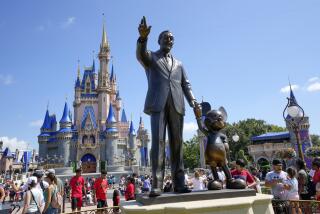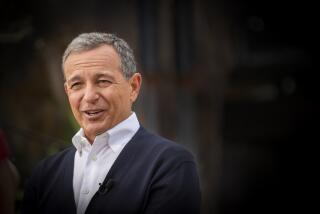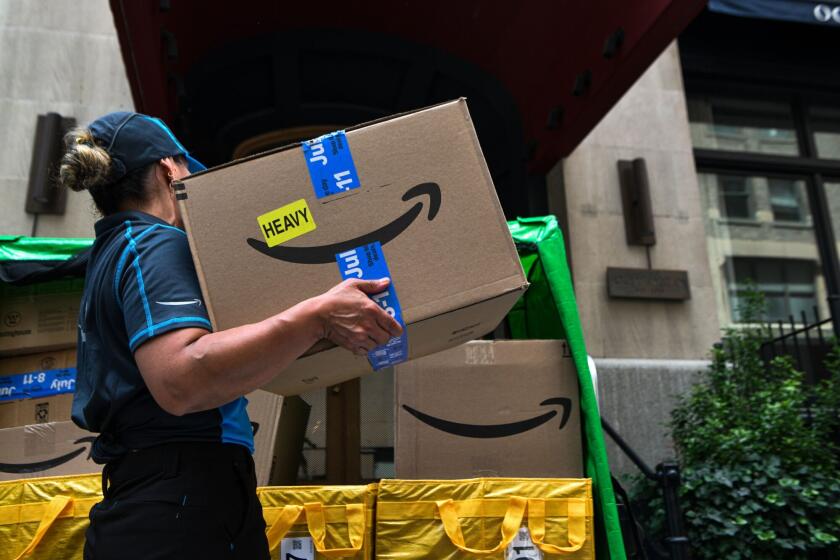Coke Adds Life to Sales, Profit After Losing Fizz in Late ‘90s
- Share via
Coca-Cola Co. just lost two high-profile contracts, with the National Football League and United Airlines, to archrival PepsiCo Inc. But those are small setbacks in Coke’s otherwise steady rebound from its desultory days in the late 1990s.
Coke is growing again, propelled in large part by the recovering U.S. economy. Its stock, a component of the Dow Jones industrial average, is again clearing 52-week highs. A management upheaval that rocked the Atlanta-based giant in recent years has abated, and a restructuring effort led by Chairman and Chief Executive Douglas Daft seems to be paying off.
When Coke reports its first-quarter results Tuesday, it’s expected to show a 9% earnings gain from a year earlier, to 38 cents per diluted share, according to analysts polled by Thomson Financial/First Call. That’s a marked change from recent years, when Coke’s earnings fell for several straight quarters. Coke’s global case shipments are on track to increase 4% to 5% in 2002, double their level of 1999.
“Coke went through two challenging years, but is now emerging as a focused, well-managed company again,” said John Sicher, publisher of the industry journal Beverage Digest.
But Coke still faces several hurdles. Simply regaining momentum for what’s already the best-known product in the world--where 11,500 people in 200 countries sip a Coke or another of its beverages every second--isn’t an easy task. In the U.S., sales of soft drinks overall grow less than 1% a year, well below the inflation rate, and Coke and PepsiCo are under constant pressure to keep prices down, making it tough to widen profit margins.
The companies’ flagship brands, in fact, lost U.S. market share last year as Americans kept migrating to juices, sports drinks and other non-carbonated beverages.
Coke Classic’s share of the U.S. soft-drink market slipped to 19.9% from 20.4% the prior year, and Pepsi-Cola dipped to 13.2% from 13.6%, according to Beverage Digest.
Coke still derives the majority of its sales from carbonated soft drinks, but the company is trying to offset their sluggish growth by building up its non-soda brands that include Minute Maid, Fruitopia and Hi-C juices, Powerade sports drinks and Dasani bottled water.
Despite its recent gains, Coke’s stock still trades at its level of five years ago. Yet some analysts said the stock’s recent rally has made the shares overpriced--for the time being--because the company still faces so many challenges. Coke’s stock, which rose 35 cents Tuesday to $53.35 a share on the New York Stock Exchange, now trades for 30 times its expected per-share earnings for 2002.
Citing the pending earnings announcement, Coke spokesman Ben Deutsch said company officials declined to be interviewed.
“We’re making good progress, but we’re not satisfied yet,” he added.
Coca-Cola, which relied on foreign markets for 62% of its $20.1billion in sales and 76% of its $4-billion profit in 2001, also faces continued poor economies in many countries.
“With Coke being such a global consumer company, their ability to execute better is very dependent on economic conditions improving,” said Patrick Schumann, an analyst with brokerage firm Edward Jones & Co. in St. Louis.
Coke--once the textbook example of how relentless marketing can sell the most mundane of products, even sugared water--seems unsure how best to market its core brands despite spending billions of dollars in advertising each year. Coke Classic’s latest slogan, “Life Tastes Good,” hasn’t been in the U.S. market a year, and the company already is scouring for a new one.
Coke also hasn’t had a president in the year since Jack Stahl quit in a fallout with Daft. So it isn’t clear who is Daft’s main successor, although executive vice president Steve Heyer, whom Coke recruited from AOL Time Warner Inc., is a key player in overhauling Coke’s strategy.
Still, the team gets passing marks for carrying out Daft’s mandate that Coke--long known for its insular, top-down management style--decentralize its operations, repair Coke’s frayed relations with its bottlers and develop new drinks to tackle the plethora of non-carbonated beverages now on store shelves.
It’s “required some major changes, both in attitude and structure,” Sicher said. “He’s [Daft] done that. The company is less Atlanta-centric than it was five years ago.”
And despite losing the deals with the NFL and UAL Corp.-owned United Airlines, Coke is still winning its share of battles in the cola wars.
On Tuesday, Coke signed a seven-year pact to be the exclusive supplier to 300-theater chain Regal Cinemas Inc.
Coke thrived in the 1980s and ‘90s under the leadership of Roberto Goizueta, a master strategist and marketer, until he died in 1997. He was replaced by M. Douglas Ivester, who encountered one problem after another during two turbulent years at the helm.
Slumping economies in Asia and other regions eroded sales and profit. Coke’s stock--once so steady that famed billionaire Warren Buffett’s Berkshire Hathaway Inc. became Coke’s largest investor, with an 8% stake--started tumbling.
The company angered many bottlers by hiking prices for syrup concentrate. Ivester and Coke also were chastised for poorly handling a contamination scare involving its soft drinks in Europe in 1999. That fiasco seemed to illustrate that Coke executives were out of touch with their far-flung markets.
It was one of the worst crises in the history of Coca-Cola, which traces its roots back 116 years. That’s when Atlanta pharmacist John Pemberton stirred up a caramel-colored, sugary syrup that, after being mixed with carbonated water, was sold at local soda fountains for 5 cents a glass.
Ivester abruptly quit in December 1999. In came Daft, who spent most of his 30 years at Coke in overseas posts. He promptly slashed 6,000 jobs, or 21% of Coke’s work force, to cut costs and jump-start earnings. And his long-term recovery plan includes pressing for innovative new drinks and marketing alliances that help Coke peddle its existing beverages.
Coke was late to the bottled-water market, but now has a strong seller with Dasani. In the last year, Coke has rolled out new versions of its Minute Maid juices, and it struck an alliance with Walt Disney Co. last year to market Disney-branded juice drinks. Sicher and others expect that Coke will soon unveil a vanilla-flavored version of Coke in North America to extend its Coke derivatives beyond such drinks as Diet Coke and Cherry Coke.
To be sure, Coca-Cola remains a huge profit maker, earning 20 cents for every $1 of sales. But more needs to be done to keep that profit growing, including “better marketing, better advertising of their core brands” such as Coke Classic, said Edward Jones’ Schumann. PepsiCo, with its Britney Spears ads, has been stealing most of Coke’s thunder.
Even so, “Doug Daft and his team are doing some of the right things and going the right direction,” Schumann said. “So far, so good.”
*
(BEGIN TEXT OF INFOBOX)
Coke Comeback?
(text of infobox not included)
More to Read
Inside the business of entertainment
The Wide Shot brings you news, analysis and insights on everything from streaming wars to production — and what it all means for the future.
You may occasionally receive promotional content from the Los Angeles Times.











